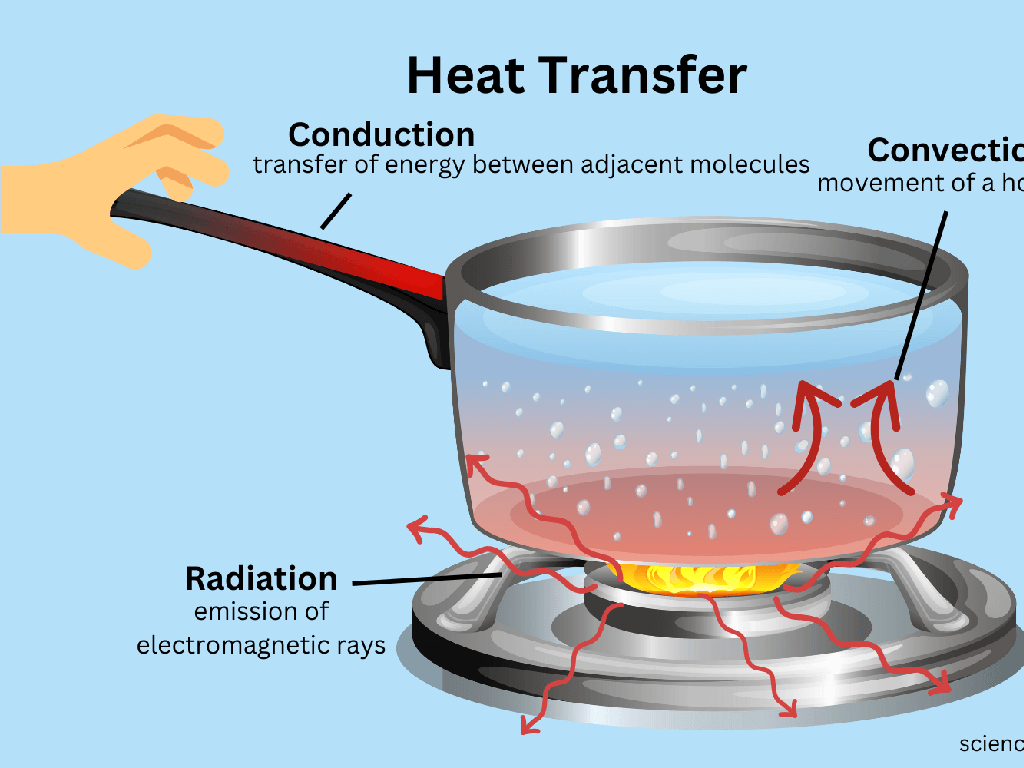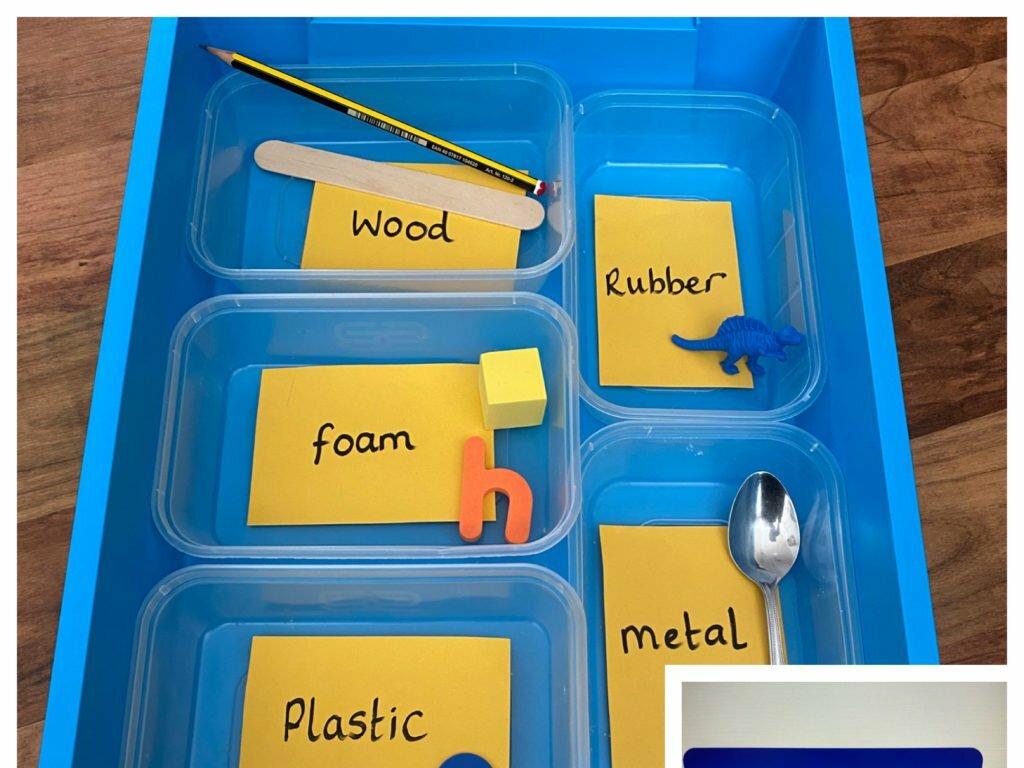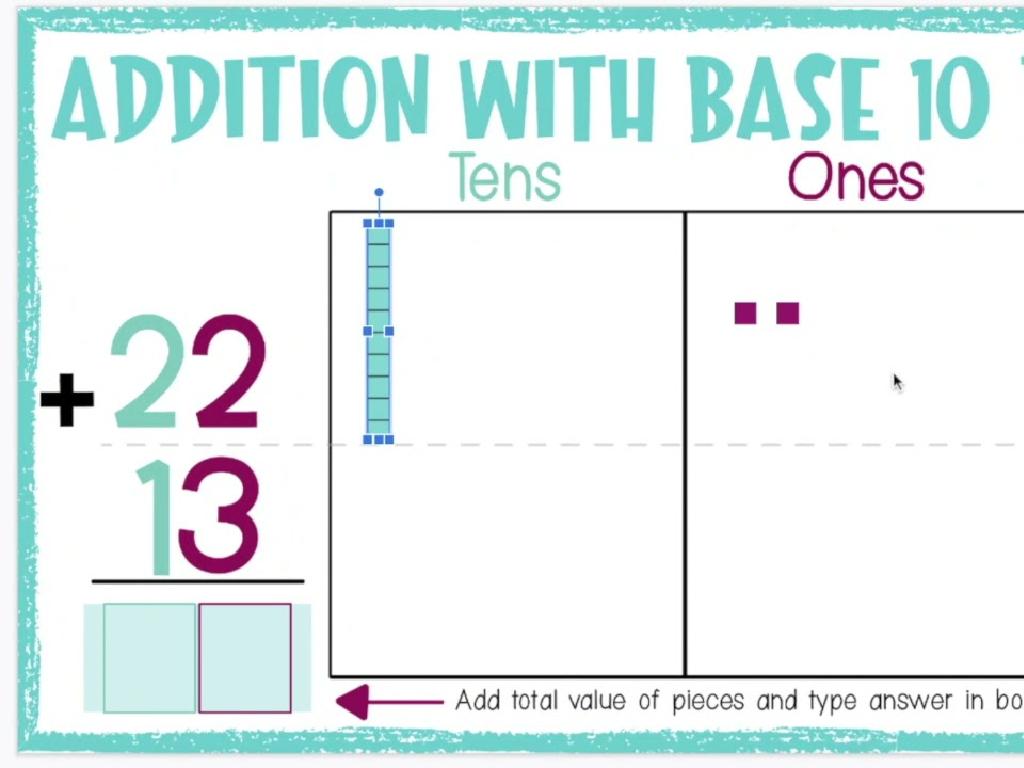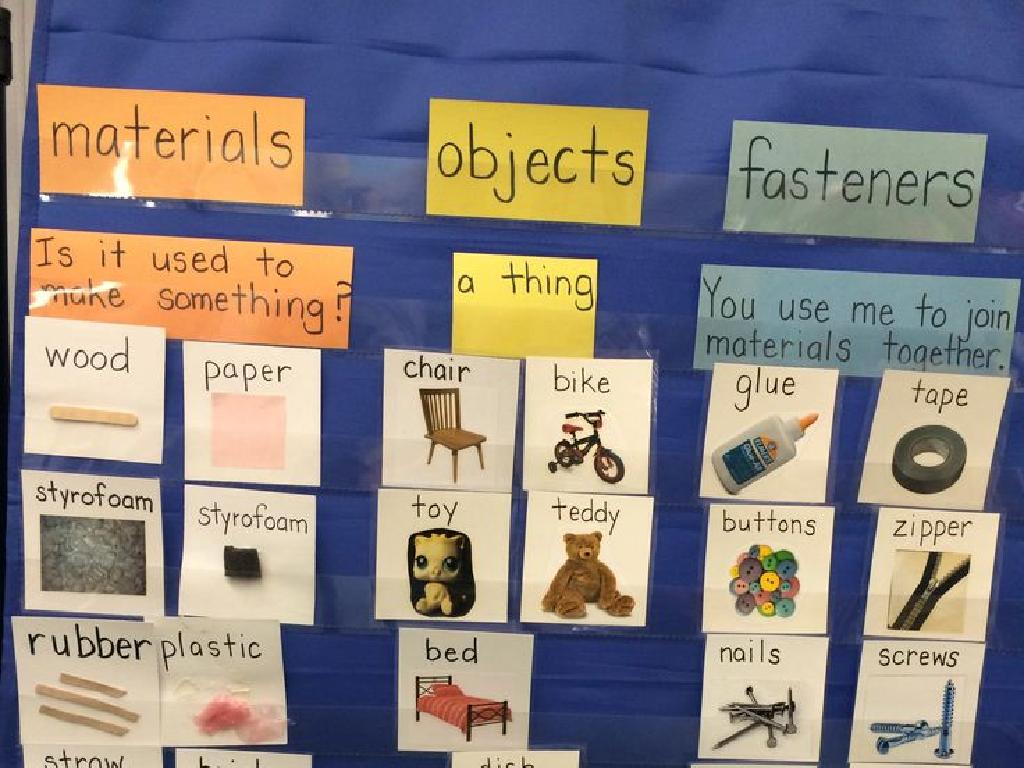Multiply And Divide Positive And Negative Fractions
Subject: Math
Grade: Seventh grade
Topic: Operations With Rational Numbers
Please LOG IN to download the presentation. Access is available to registered users only.
View More Content
Multiplying & Dividing Rational Numbers
– Understanding positive & negative fractions
– A fraction has a numerator & a denominator, can be positive or negative
– Steps to multiply and divide fractions
– To multiply, cross-multiply numerators & denominators; for division, flip the second fraction and multiply
– Real-life applications of rational numbers
– Use in cooking, budgeting, and time management
– Practice problems for mastery
|
This slide introduces the concept of multiplying and dividing both positive and negative fractions, which is a key skill in understanding rational numbers. Start by explaining what positive and negative fractions are, with examples. Then, demonstrate the steps to multiply and divide fractions, ensuring to clarify the rule of multiplying by the reciprocal when dividing. Discuss real-life scenarios where these operations are applicable, such as adjusting a recipe or splitting a bill. Conclude with practice problems to solidify the students’ understanding, ensuring to include both positive and negative fractions to challenge their comprehension.
Recap: Understanding Rational Numbers
– Define rational numbers
– Numbers that can be expressed as a fraction a/b, where a and b are integers and b is not zero.
– Examples vs. non-examples
– Examples: 1/2, -3/4; Non-examples: Pi (À), square root of 2
– Quick activity: Identify rational numbers
– List numbers, students circle the rationals
|
This slide is a quick recap of rational numbers, aiming to solidify the students’ understanding before moving on to operations with them. Start by defining rational numbers, emphasizing that they can be written as a fraction with an integer numerator and a non-zero integer denominator. Provide clear examples of rational numbers, including both positive and negative fractions, and contrast them with non-examples like irrational numbers. Engage the class with a quick activity where they identify rational numbers from a mixed list, reinforcing their ability to distinguish between rational and irrational numbers. This activity will prepare them for the upcoming lessons on multiplying and dividing these types of numbers.
Multiplying Positive and Negative Fractions
– Rules for multiplying fractions
– Like signs yield a positive product
– When both fractions are positive or negative, the result is positive
– Unlike signs yield a negative product
– When one fraction is positive and the other is negative, the result is negative
– Example: Multiplying fractions
– E.g., (-2/3) * (4/5) = -8/15
|
This slide introduces the rules for multiplying fractions with a focus on the signs of the numbers. Start by reviewing the general rules for multiplying fractions: multiply the numerators to get the new numerator, and multiply the denominators to get the new denominator. Emphasize that the sign of the result depends on the signs of the fractions being multiplied. If both fractions have the same sign, the result is positive. If the fractions have different signs, the result is negative. Provide an example, such as multiplying a negative fraction by a positive fraction, and show the students how to arrive at the answer. Encourage students to practice with additional examples and to pay close attention to the signs of the fractions when multiplying.
Dividing Positive and Negative Fractions
– Rules for dividing fractions
– Invert the divisor and multiply to divide fractions
– Dividing like-signed fractions
– Result is positive when signs are alike
– Dividing unlike-signed fractions
– Result is negative when signs differ
– Example: (-3/4) ÷ (1/2)
– (-3/4) ÷ (1/2) = (-3/4) * (2/1) = -3/2 or -1.5
|
When dividing fractions, regardless of their signs, the process involves inverting the divisor (the second fraction) and then multiplying. If both fractions have the same sign, the result of the division will be positive. Conversely, if the fractions have different signs, the result will be negative. For example, dividing -3/4 by 1/2, we invert 1/2 to 2/1 and multiply it with -3/4 to get -3/2 or -1.5. It’s crucial to ensure students understand the rule of signs and practice with various examples to solidify their understanding.
Class Activity: Multiplying & Dividing Fractions
– Practice Problem 1: Multiply negatives
– Multiply: (-3/4) * (-2/5) = ?
– Practice Problem 2: Divide positive by negative
– Divide: (5/6) ÷ (-2/3) = ?
– Work through problems together
– Understand rules for multiplying/dividing
– Remember: A negative times a negative equals a positive.
|
This slide is designed for a class activity where students will engage in practicing the multiplication and division of fractions with different signs. The first problem will reinforce the concept that the product of two negative fractions is positive. The second problem will help students understand how to divide a positive fraction by a negative one. Work through these problems as a class, step by step, to ensure students grasp the process and the rules. Encourage students to explain their reasoning and the steps they take to solve each problem. Possible activities include pairing students to solve additional problems, using manipulatives to visualize the fractions, or creating a real-life scenario where they might use these operations.
Strategies for Success: Fractions
– Simplify fractions before operations
– Reduce fractions to lowest terms to simplify calculations.
– Cross-cancel to ease multiplication
– Cross-cancel common factors between numerators and denominators before multiplying.
– Use estimation to check work
– After multiplying or dividing, estimate to verify the result’s reasonableness.
– Practice with positive & negative fractions
|
This slide aims to equip students with effective strategies for multiplying and dividing positive and negative fractions. Start by simplifying fractions to their lowest terms, which can make the multiplication or division process much simpler. Introduce cross-canceling as a method to reduce fractions before multiplying, which can save time and reduce errors. Emphasize the importance of estimation as a quick way to check the accuracy of their answers. Provide examples with both positive and negative fractions to ensure students are comfortable with the concept. Encourage students to practice these strategies with a variety of problems to build their confidence and proficiency.
Class Activity: Fraction Operations Relay
– Form groups for relay activity
– Solve assigned fraction problems
– Use multiplication and division of positive and negative fractions
– Each group presents their solutions
– Discuss various solving approaches
– Compare methods and learn from peers
|
This interactive class activity is designed to engage students in practicing the multiplication and division of positive and negative fractions. Divide the class into small groups and assign each group a set of fraction problems to solve collaboratively. After solving, each group will present their solutions to the class, explaining their thought process and the steps they took. Following the presentations, lead a class discussion on the different approaches used by each group, highlighting various strategies and techniques. This will help students see multiple methods for solving problems and understand the underlying concepts more deeply. Possible activities for different groups could include simplifying complex fractions, finding the product of mixed numbers, or dividing negative fractions. Encourage students to explain their reasoning and to ask questions about their classmates’ methods.
Wrapping Up: Fractions Multiplication & Division
– Review of multiplying fractions
– Remember to multiply across numerators and denominators
– Review of dividing fractions
– Keep, change, flip: Dividing fractions made easy
– Homework: Practice worksheet
– Complete the worksheet to master today’s lesson
– Next class: Add & subtract rational numbers
|
As we conclude today’s lesson on multiplying and dividing positive and negative fractions, remind students of the key steps for each operation. For multiplication, emphasize the importance of multiplying the numerators together and the denominators together. For division, reiterate the ‘keep, change, flip’ method: keep the first fraction, change the division sign to multiplication, and flip the second fraction. Assign the practice worksheet for homework to reinforce these concepts. Looking ahead, inform students that the next class will focus on adding and subtracting rational numbers, building on their understanding of fractions. Encourage them to bring any questions they have to the next class for clarification.






